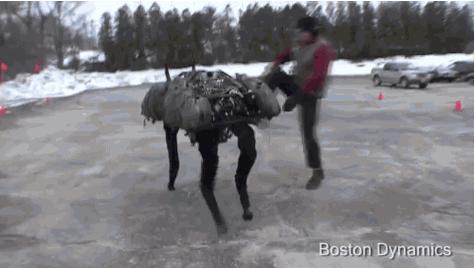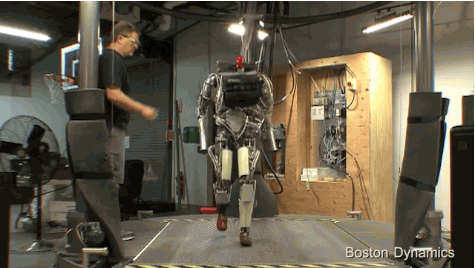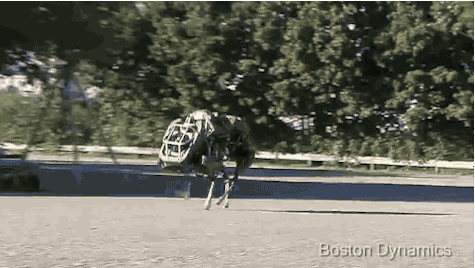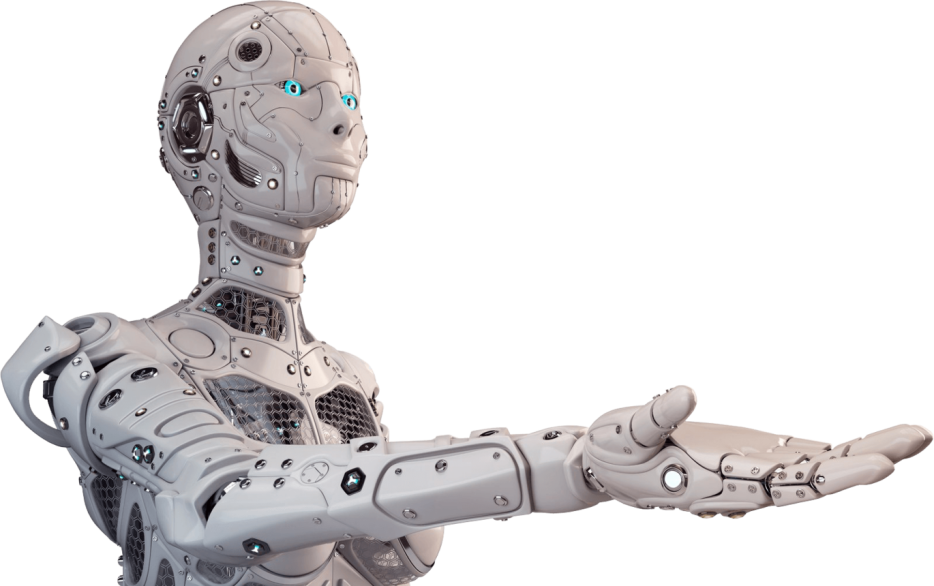You can’t always predict what will grab and hold your attention—a pop song, a politician, a personal tragedy. As the year comes to an end, Hazlitt’s writers look back on the things they were particularly preoccupied with in 2013.
Unless you were staring patiently at YouTube, you could have mistaken the buzzing of BigDog Reflexes for anything. A lawnmower appealing to a higher power, maybe. This was 2009: it was perfectly reasonable to be somewhere else while your clip loaded—do you, buffering circle—which made the eventual reveal of the buzzing’s source, a 240-pound robotic pack mule, all the more alarming. You had to go outside. Have a good sit.
BigDog does this thing with its legs. When toppled, it staggers—splays, really. Hydraulics struggle to regain balance. The buzzing whips up. BigDog comes alive in a way few things with legs ever do, and I am licking my lips.

2013 was the year I left a job as a technology journalist, to, among other things, think more critically about technology. It made sense at the time. I finally had the space to obsess over stories that eluded me. And one of the many white whales was a small M.I.T. offshoot that became a world-class robotics firm, producing clips like BigDog Reflexes.
The company was Boston Dynamics. You may have heard of them.
Last Friday, around midnight EST, Google announced it had purchased Boston Dynamics for an undisclosed amount. Overnight, an outfit known for making experimental terrors funded mostly by The Defense Advanced Research Projects Agency, or DARPA, the research wing of the U.S. Department of Defense, became a cog in Google executive Andy Rubin’s expansion into commercial robots. The Internet shook, as it always does.
In a 1960 interview with Cinépanorama, French director Robert Bresson remarked that his films were meant to be felt, first and foremost. Intellect came a distant never. That’s a useful way to understand the doom and delight that, together, crested every time Boston Dynamics uploaded an imagination-stroking clip to YouTube. How could we deny our emotions? From the toy-like Sand Flea’s 30-foot leap and the all too human strut of PETMAN, to the capital “F” Future of BigDog’s family tree—the U.S. Marine Corp-backed Legged Squad System (LS3) and the recently unveiled WildCat—one thing was clear from my corner of the pull-to-refresh set: chum was in the water. Each time, I took to Twitter, comments, anything with a text field, humming: I had quips. Serious questions about the time-to-failure of certain systems and what wasn’t being shown to the public. Not so serious asides to Metal Gear Solid and, if I skipped breakfast, SkyNet. Apocalyptic speculation is never not fun.
This pattern owes plenty to YouTube—another Google property. Boston Dynamics was as much its YouTube channel as it was a robotics firm. Poorly lit, with a look that betrayed iMovie’s default settings, the videos were what Boston Dynamics did best: present experimental technologies as logical conclusions. Of course we’ll have quadruped robots running faster than Usain Bolt. I mean, obvy. The banality of it all; how could you resist? But there were consequences to this kind of thinking.

PETMAN isn’t the T-1000. It was meant to test hazard suits worn by military personnel, so, the logic goes, it needed to move like one. LS3 isn’t a mobile weapons platform, but a way to haul supplies across uneven terrain. In neither case are the technologies murderous on their own, but a very real problem lies in the goals they serve. Here are robots meant to streamline war. Make war go faster.
My—our—obsession with Boston Dynamics served as a kind of military boosterism. An obscenely large foam hand emblazoned with the words Real Future Shit (and, occasionally, We’re All Going to Die). Also, a sense that only in a not-too-distant future will war be truly horrifying, when it’s waged by articulated legs, quadcopter swarms, railguns—only then. I’m absolved of any guilt about the wars happening right now because I’ve transferred it to the future still buffering. Fearing what a robot might do makes me comfortable with what drone strikes do right now.
Paralysis comes swift when you think of all the ways you’re complicit in ongoing horror. So 2013 went to drone pilot confessionals. Snake robots in water. It was also the year I turned 30, and, feeling nostalgic, searched for early footage of the Gulf War—the moment, I think, science fact and science fiction became inseparable, inviting all of us to imagine what could be at the cost of what already was.

No one company should take all the blame, if that’s even the word. The speculative arms industry is thirsty and involves universities, blogs, commercial gimmicks—even DIY makers cobbling better, cooler drones in the backyard. Harmless, robbed of context.
“It’s not like the military came and said, ‘We need a legged sherpa.’” said Andrew String, a former engineer with Boston Dynamics in The Verge. “We said, ‘Hey, we’re really into legs, can you guys use these?’ And the military was like, ‘Yeah I guess.’”
All of this has been muted somewhat by Google, stating its disinterest in pursuing future military contracts, for, as Illah Reza Nourbakhsh writes in The New Yorker, “Robot Smog”—a new pollution made entirely of delivery drones and elder care assistants. Existing military contracts, however, will be honoured. Everybody wins. (Nobody wins.)

What was Boston Dynamics? A vivarium for ideas, I think. A platform for us to fret and cajole and smear our shit all over the comments of each new YouTube, because the slightest suggestion of the future would comfort us from an ugly present. And no answer can go without mentioning its proximity to Google’s video service. Early in November, Automaton editor Erico Guizzo blogged the keynote speech given by Marc Raibert, CTO and founder of Boston Dynamics, at the IEEE International Conference on Intelligent Robots and Systems. Weeks before the announcement, there was Google, in plain sight:
“Raibert ended his talk by saying that, when he was a professor, he used to write papers and count his citations. Now, as a company person, he doesn’t care about papers—what he cares about are YouTube views.”
Boston Dynamics’ first video of 2013, dated February 28, was Dynamic Robot Manipulation. And yes, it delivered. The year saw updates of existing designs, check-ins with old friends, and ended with something entirely new, a linebacker on all fours, Introducing WildCat. I remember my apoplexy each and every time. It felt good. That was the company’s currency, design fictions big and small. Potential technologies as emotional release. Boston Dynamics’ I.V. drip of actuators and servos sated my need for the new, and in turn my frisson gave DARPA, the Pentagon pause. In a sense, BigDog existed to fund more BigDogs. Sure they looked odd, all those legs—that awful buzzing—but here, come closer, you’ve got to see it move.







